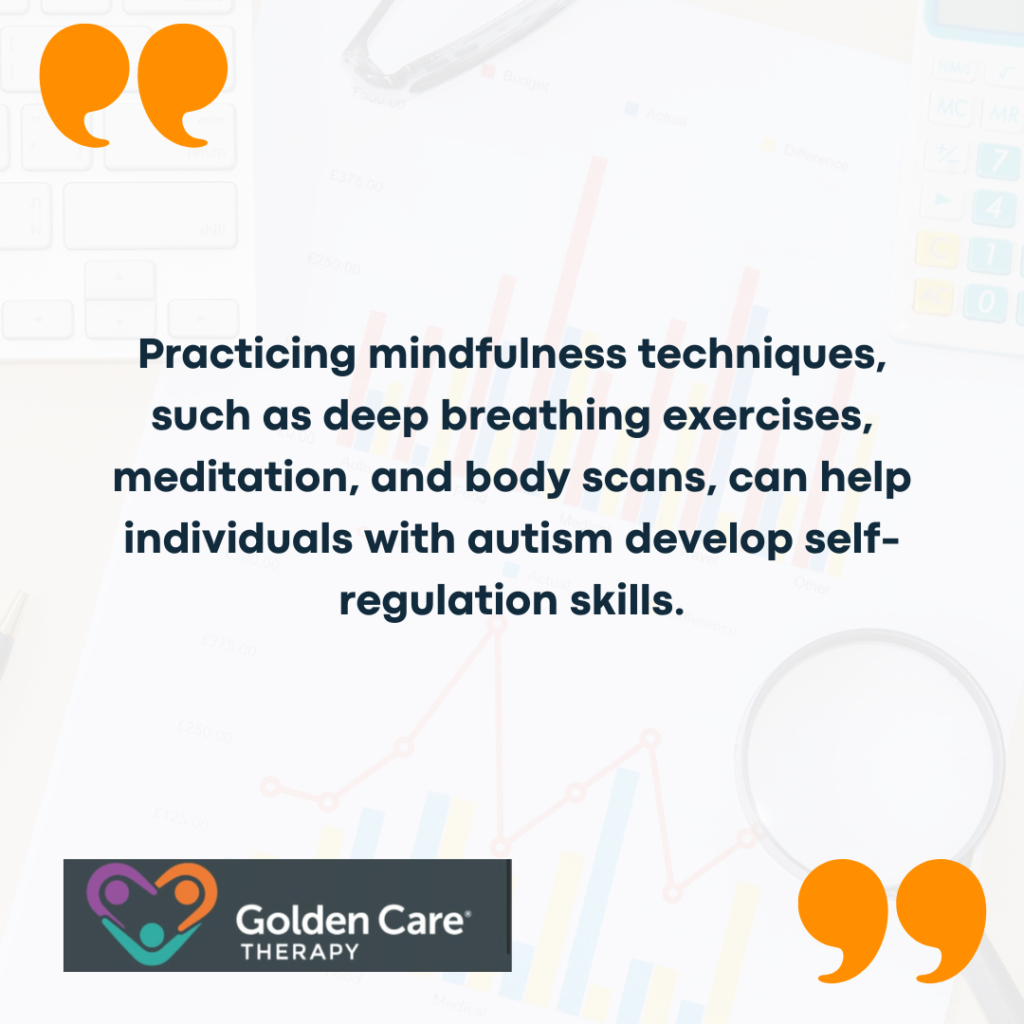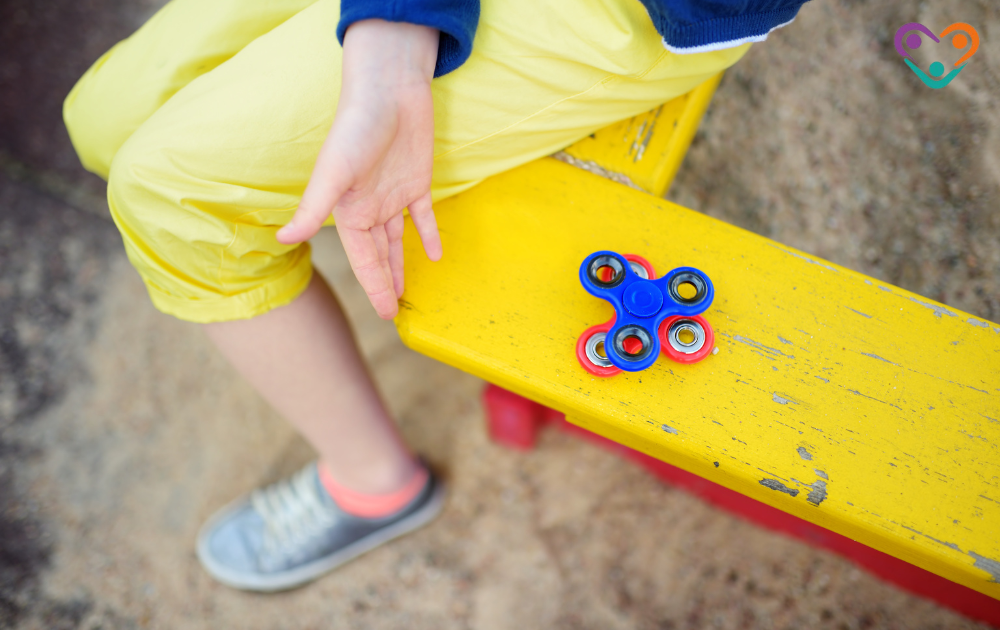For individuals with autism, stress and anxiety can be significant challenges. Understanding the unique aspects of autism-related stress is crucial in providing effective support. In the sections below, we will explore the prevalence of anxiety in autism and the developmental differences in anxiety experienced by individuals on the autism spectrum.

Prevalence of Anxiety in Autism
Research conducted up until 2019 has revealed alarming rates of anxiety among individuals with autism. Studies have shown a prevalence rate of 40% in autistic children and adolescents and an even higher rate of 50% in autistic adults. These rates are significantly higher compared to non-autistic individuals in the same age group.
The high prevalence of anxiety in autism underscores the need for effective stress management strategies and support. By recognizing and addressing anxiety, parents, caregivers, and individuals on the autism spectrum can work towards reducing stress levels and improving overall well-being.
Developmental Differences in Anxiety
Anxiety in autism can manifest differently across development stages. A study conducted by Keefer and colleagues highlighted disparities in the prevalence of subclinical and clinical anxiety between school-age children and adults on the autism spectrum. It revealed that anxiety rates tend to increase as individuals transition into adulthood.
Furthermore, another study found that 31% of autistic children surveyed experienced both traditional DSM-5 anxiety and ambiguous anxiety simultaneously. It’s important to note that these rates could potentially be higher as some articles did not assess ambiguous anxiety.
Understanding the developmental differences in anxiety allows for tailored interventions and support strategies. By recognizing the unique challenges faced by individuals with autism at different stages of life, appropriate measures can be taken to help manage anxiety effectively.
To address autism-related stress, it’s important to explore various autism stress relievers and implement strategies that are suitable for the individual’s needs. By providing a supportive environment and utilizing effective stress management techniques, parents, caregivers, and individuals with autism can promote overall well-being and enhance quality of life.
Anxiety Management Strategies

Managing anxiety is an essential aspect of supporting individuals with autism. There are various strategies that can be employed to help alleviate stress and promote emotional well-being. In this section, we will explore three key anxiety management strategies: medication and therapy, mindfulness and awareness, and calming and relaxation techniques.
Medication and Therapy
When it comes to managing anxiety in individuals with autism, a combination of medication and therapy can be beneficial. However, it’s important to note that the use of medication should always be guided by a healthcare professional, and careful consideration should be given to the potential risks and benefits.
On the other hand, while there is a lack of data on medication management specifically for anxiety in autism, Modified Cognitive Behavioral Therapy (MCBT) is often focused on as a psychological intervention. MCBT aims to help individuals recognize and challenge negative thought patterns, develop coping strategies, and improve problem-solving skills.
Mindfulness and Awareness
Mindfulness-based treatments have gained attention for their potential benefits in individuals with autism, particularly for parents and caregivers. These treatments are rooted in awareness and non-judgmental attention to the present moment, helping individuals cultivate a sense of calm and reduce anxiety.
Practicing mindfulness techniques, such as deep breathing exercises, meditation, and body scans, can help individuals with autism develop self-regulation skills. Mindfulness-based interventions can also be tailored to meet the specific needs and abilities of individuals with autism, promoting relaxation and reducing stress.
Calming and Relaxation Techniques
Teaching individuals with autism calming and relaxation techniques is essential for preventing anxiety escalation, especially in rapidly changing environments. These techniques can help individuals self-soothe and manage stress effectively. Some common calming and relaxation techniques include deep breathing exercises, progressive muscle relaxation, sensory activities, and visualization exercises.
These techniques can be incorporated into daily routines and used as tools to promote a sense of calmness and relaxation. By combining medication and therapy, incorporating mindfulness and awareness practices, and teaching calming and relaxation techniques, individuals with autism can develop effective strategies to manage anxiety and improve their overall well-being.
Supporting Individuals with Autism
When it comes to supporting individuals with autism, understanding their unique needs and challenges is crucial. This section will delve into three important aspects of autism support: recognizing signs of anxiety, promoting interoceptive awareness, and handling meltdowns and outbursts.
Signs of Anxiety in Autism
Anxiety is prevalent in individuals with autism. Studies show that the figures are significantly higher than those found in non-autistic individuals of the same age group. By recognizing the relevant signs, caregivers can intervene early and implement appropriate strategies to help alleviate anxiety.
Signs of anxiety in autism can vary from person to person, but common indicators include increased stimming (repetitive behaviors), vocalizations, repetitive behavior, and changes in behavior patterns. These behaviors may serve as coping mechanisms or attempts to self-regulate in response to anxiety-inducing situations.
Interoceptive Awareness
Interoceptive awareness refers to the ability to perceive and understand one’s internal bodily sensations. It plays a crucial role in self-regulation and emotional well-being. For individuals with autism, developing interoceptive awareness can be especially beneficial in managing anxiety and stress.
Promoting interoceptive awareness can be done through activities such as deep breathing exercises, body scans, and mindfulness practices. By enhancing interoceptive awareness, individuals with autism can better understand and respond to their own emotions, helping them regulate anxiety more effectively.
Handling Meltdowns and Outbursts
Meltdowns and outbursts are common challenges faced by individuals with autism, and it’s important for caregivers to know how to handle these situations effectively. When faced with a meltdown or outburst, it’s crucial to remain calm and patient. Instead of trying to teach calming techniques during the heat of the moment, allow time for processing and offer reassurance.
Maintaining a trusting relationship with the individual is key to supporting their well-being. After the meltdown or outburst has subsided, it may be helpful to discuss the event calmly and encourage the individual to reflect on their feelings. Remember, supporting individuals with autism is an ongoing process that requires empathy and a commitment to their overall well-being.
Tools for Stress Relief

Thanks to innovations done by experts in this topic, there are now various tools and strategies that can be beneficial. In this section, we will explore three effective stress relievers: fidget spinners, physical activities for pleasure, and hand fidgets with tactile stimulation.
Fidget Spinners
Fidget spinners have gained popularity as self-regulation tools used by occupational therapists and educators to assist children with stress, anxiety, concentration, and fine motor skills. These small handheld devices feature a central bearing that allows them to spin when manipulated by the fingers.
The repetitive and rhythmic motion of spinning the fidget spinner can provide a calming effect and help individuals with autism focus their attention. It can also redirect their energy and reduce feelings of stress or anxiety. It’s, however, important to note that fidget spinners may not work for everyone.
Physical Activities for Pleasure
Engaging in enjoyable physical activities can be an effective way to manage stress in individuals with autism. These activities, such as jumping on a trampoline, swinging, or dancing, are linked to pleasure responses in the brain, releasing hormones like dopamine and norepinephrine.
These hormones can increase attention and focus, benefiting children with autism spectrum disorder (ASD) who may struggle with these aspects. By incorporating physical activities into their routine, individuals with autism can experience the positive effects of movement and sensory input.
Hand Fidgets and Tactile Stimulation
Hand fidgets and tactile stimulation tools can be beneficial for individuals with autism spectrum disorder (ASD) in terms of self-regulation, managing anxiety, improving attention, and calming down during emotional surges. These fidget toys provide a means for individuals to engage in fidgeting or stimming activities that can help them release tension and focus their attention.
Other tactile stimulation tools, such as sensory brushes with bristled tactile surfaces, can also be helpful in providing sensory input for individuals with autism who crave sensory stimulation. However, it’s important to note that these tools are not intended to replace a brushing program or sensory diet. They can contribute to self-regulation and provide sensory satisfaction for those who seek tactile input.
By incorporating stress relief tools like fidget spinners, engaging in physical activities for pleasure, and utilizing hand fidgets with tactile stimulation, individuals with autism can find effective strategies to manage stress and promote overall well-being. It’s important to explore different options and tailor the approach to the individual’s specific needs and preferences.
Research continues to shed light on the neurological basis of sensory issues in autism, offering hope for more targeted and effective therapies in the future. By recognizing and addressing sensory processing difficulties, we can improve the quality of life for individuals with autism and their families. If you’re seeking specialized ABA therapy in New Jersey, Indiana, Georgia, and New York, Golden Care offers comprehensive services tailored to meet the unique needs of each individual. Contact us to learn more or book a consultation today.
Sources:
- https://www.autismparentingmagazine.com/fidget-toys-to-relieve-stress-anxiety/#:~:text=Fidgets%20are%20especially%20useful%20in,as%20extreme%20anger%20or%20frustration
- https://autism.org/treatment/stress-anxiety-reduction/
- https://autismawarenesscentre.com/calming-strategies-to-support-a-person-with-autism/



